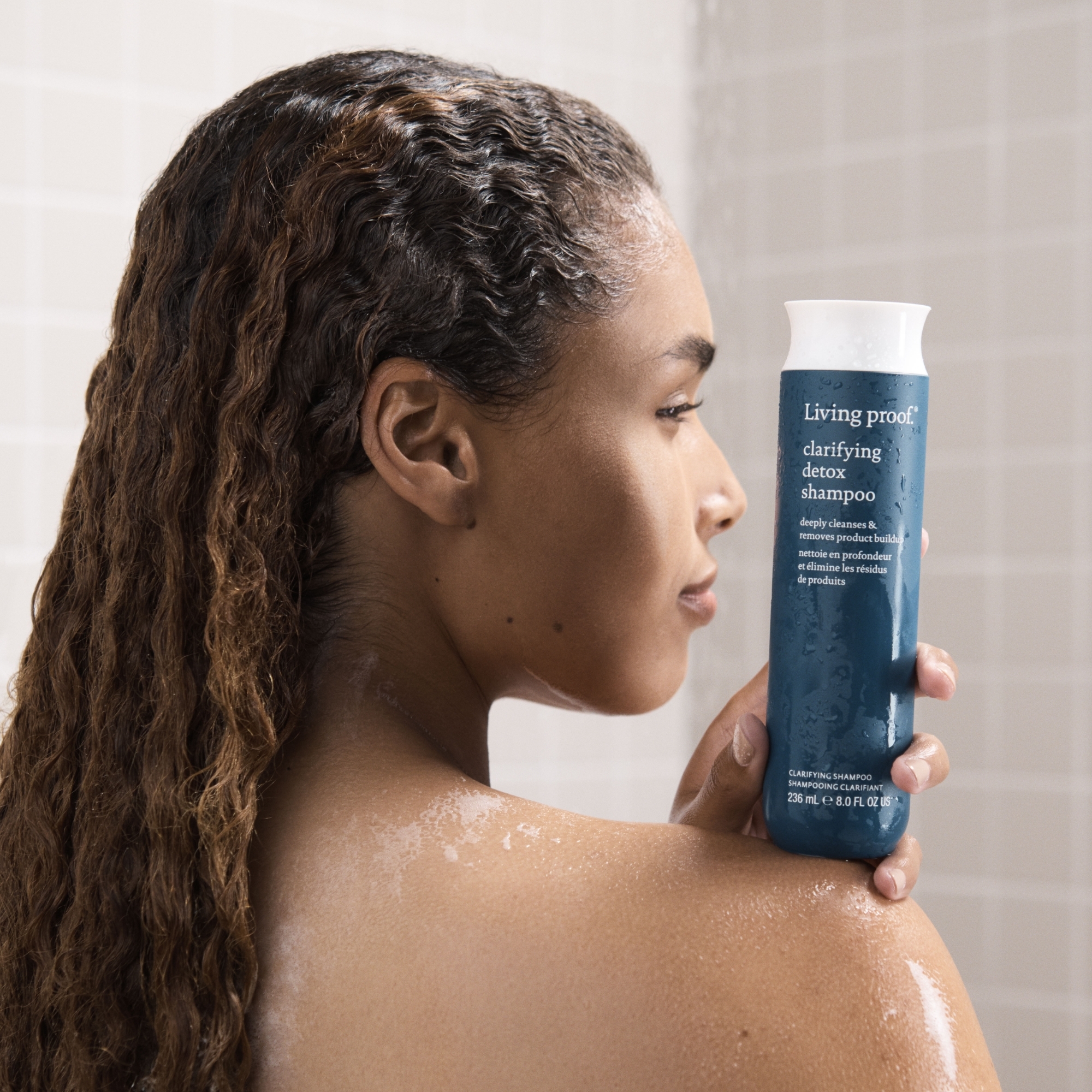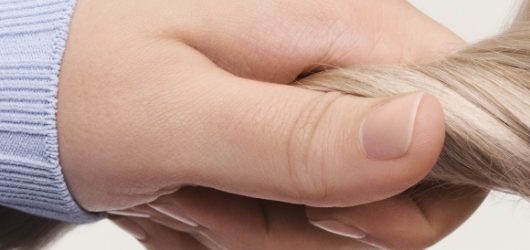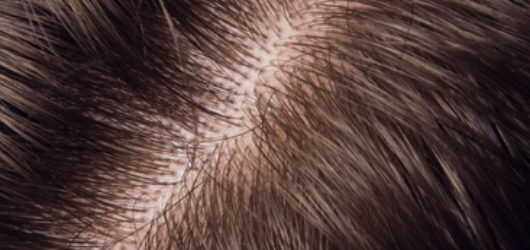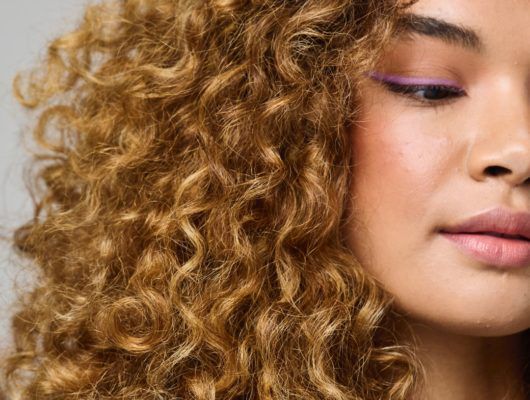
How to Get Healthy Hair: Top 13 Pro Tips
Did you know your hair health depends on many different factors, from your genetics to the products you use to your daily habits? Achieving healthy hair means tailoring haircare practices and techniques to your specific hair type.
At Living Proof, our scientifically-proven products are designed to boost your hair’s health. We’ve developed solutions for diverse hair needs, ensuring noticeable results from root to tip. Explore our expert haircare tips and insights to refine your routine.
How to get healthy hair.
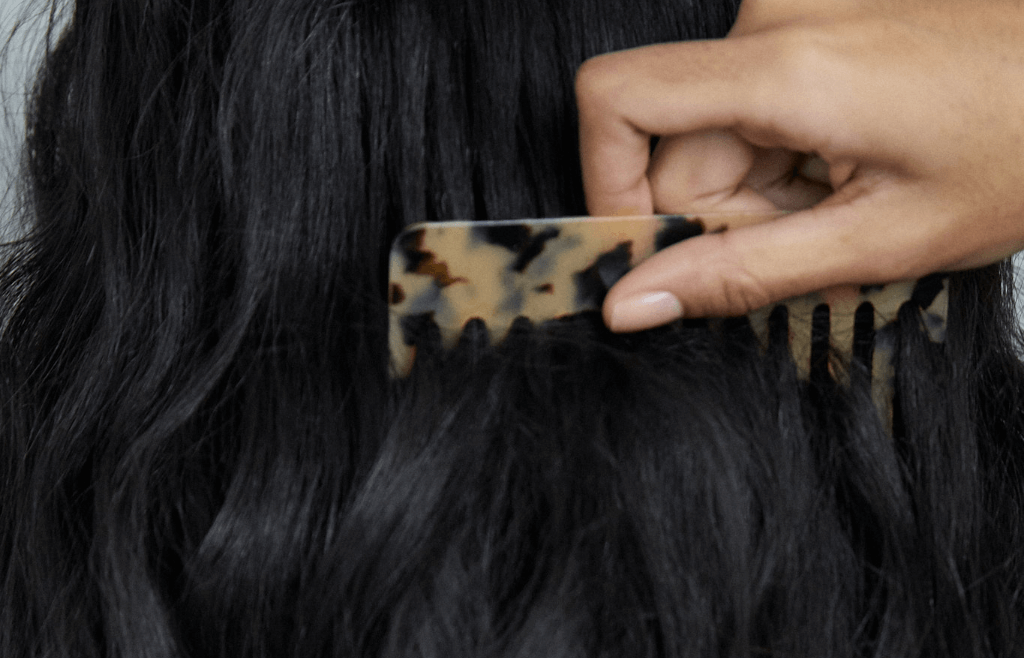
For many, healthy hair is a priority. It can hint at overall wellness and plays a significant role in our personal identity, especially through its color, cut, and connection with our overall aesthetic.
Despite the value we place on it, achieving optimal hair health can be challenging.
Are you struggling to keep your hair healthy? You’re not alone. Some of the most common hair challenges include:
- Dryness and dullness
- Breakage and split ends
- Color fading and brassiness
- Product buildup
- Scalp issues
Let’s explore the top 13 pro tips for tackling these issues and enhancing your hair health for the long term.
1. Take a personal approach to haircare.
Understanding your hair type and its unique needs is essential for achieving healthy hair. The American Academy of Dermatology emphasizes the importance of tailoring your approach based on differences in:
- Haircare routines
- Product selection
- Damage prevention techniques
For instance, while someone with curly hair might focus on adding moisture, an individual with fine hair might opt for products that add volume.
At Living Proof, our goal is to simplify your journey to healthy hair. We offer a wide range of products, with each one designed to cater to specific hair types and challenges. Whether you’re looking for smooth hair, hydration, or lasting volume, Living Proof has a product tailored for you.
2. Avoid harsh ingredients.
It’s a harsh truth: many hair products in today’s market contain ingredients that can strip hair of its natural oils, leading to dryness and damage. Common ingredients to watch out for include:
- Sulfates
- Parabens
- Synthetic fragrances
But with Living Proof, you’re in safe hands. Our commitment to your hair’s health is evident in our scientifically-proven and innovative approach. Our products are free from the usual suspects — phthalates, sulfates, and parabens — as well as other concerning additives like formaldehyde, silicones [more on this later], and talc.
More than simply avoiding certain ingredients, Living Proof products go through rigorous testing. Our scientists use various industry- and hair-specific assessments, such as tensile strength testing.
The benefits of opting for haircare free of harsh chemicals include:
- Enhanced long-term hair health
- A reduced risk of scalp irritation and damage
- Environmentally friendly choices that benefit both your hair and the planet
3. Use hair masks regularly.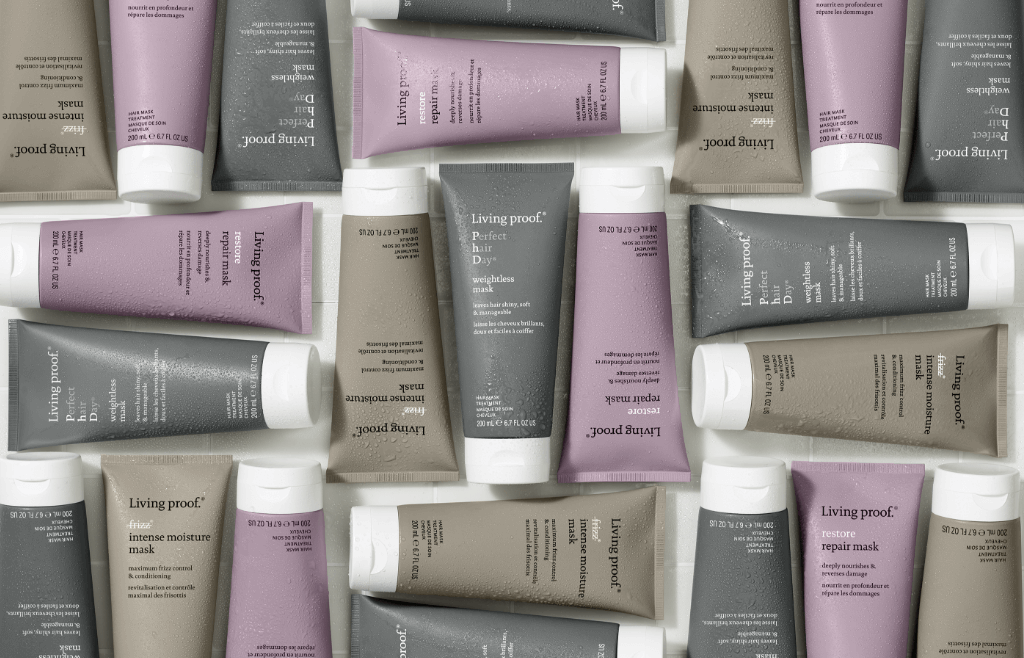 Hair masks are like spa treatments for your hair. They offer conditioning and repair that everyday products can’t match. Here are some key benefits:
Hair masks are like spa treatments for your hair. They offer conditioning and repair that everyday products can’t match. Here are some key benefits:
- Deep conditioning: Intense hydration boosts the hair’s softness and reduces frizziness
- Damage repair: Masks can address and prevent further harm from factors like heat styling and environmental stressors
- Protection after coloring: For those with dyed hair, masks can rejuvenate and hydrate hair exposed to chemical processes, such as dying
Living Proof understands the value hair masks bring to a healthy hair routine. Among our curated range, we have:
- Intense Moisture Mask: Saturates hair with needed moisture, reducing breakage and upping shine
- Repair Mask: Targets breakage, ensuring your hair feels revitalized
- Weightless Mask: Offers deep conditioning that won’t weigh down fine hair types
4. Don’t skip trims.
One of the simplest yet most effective healthy hair habits is getting regular trims. Contrary to the myth that cutting makes hair grow slower, trims are essential in maintaining its health. WebMD emphasizes that regular trims:
- Remove split ends
- Prevent further damage, ensuring the hair remains strong from root to tip
For optimal hair health, it’s advisable to book a trim every 6-8 weeks. While the frequency can vary based on individual hair types and styling habits, this time frame typically works for most.
5. Use a protectant when working with heat-styling tools.
Heat styling tools can quickly elevate a look, but they come with their own set of challenges. Frequent and improper use can lead to:
- Dryness: Excessive heat can strip away natural oils, leaving hair parched.
- Breakage: High temperatures weaken hair structure, causing it to snap easily.
- Color fading: Those with colored hair might notice faster fading when heat is over-applied.
To ensure your hair stays healthy during heat styling, consider these strategies:
- Use heat protectant sprays: These act as a barrier, shielding your hair from the direct impact of heat.
- Adjust heat settings: Not all hair types require the highest setting. Start at a lower temperature and increase only if necessary.
- Let your hair air dry sometimes: Giving your hair a break from heat can make a difference. For those looking to enhance their air-dried look, Living Proof offers air-drying products that work wonders without the need for heat.
Among Living Proof’s lineup, our heat protectant products stand out. Applying them before using any heat tools can drastically reduce potential damage, ensuring your hair remains healthy.
6. Go longer between color treatments.
Coloring hair can be transformative, but like all good things, moderation is key. Overdoing it can lead to:
- Dryness: Frequent chemical treatments can sap the hair’s moisture.
- Breakage: The hair becomes more susceptible to snapping post-color treatments.
- Scalp irritation: Overexposure to chemicals might irritate the skin on the scalp.
As Natalie Rotger — a renowned hair colorist based in New York City — suggests in Vogue, waiting six to eight weeks between color services can be beneficial. She also emphasizes the importance of applying a leave-in conditioner before long exposures to the sun or water.
To get the most out of your color treatments and maintain healthy hair, you might want to:
- Use color-safe products: They’re designed to retain color vibrancy and longevity.
- Reduce heat styling: As heat can fade color, minimizing its use can help retain your chosen shade.
- Protect against UV rays: Products like Restore Perfecting Spray or Repair Leave-In offer protection against the sun’s rays that might cause color to fade faster. Additionally, consider using dry shampoo to extend the time between washes, helping both your style and color last longer.
7. Don’t overwash your hair.
Regular hair washing is a routine part of many people’s grooming habits. However, it’s essential to strike the right balance for healthy hair. Overwashing can strip the hair of its natural oils, which might lead to:
- Dryness: Natural oils act as a barrier, keeping the hair moisturized.
- Breakage: Dry hair is more brittle, making it prone to snapping.
How often should you wash? Figuring this out involves a mix of listening to your hair and understanding general guidelines:
- Oily hair: Every 1-2 days. Oily hair might need frequent cleansing to prevent buildup.
- Hair that’s neither oily nor dry: Every 3-4 days. This offers a balance between cleanliness and retaining essential oils.
- Dry hair: Once a week. Overwashing can increase dryness.
However, it’s important to note that individual needs might vary, and factors beyond oil production can influence the optimal washing frequency. The key is to understand and adapt to what your hair tells you.
For those looking for a refreshed feel without daily washing, Living Proof’s range of shampoos and conditioners caters to varying needs and keeps hair cleaner for longer. In between wash days, consider our dry shampoos, which clean hair just as well as rinse-out shampoos.
8. Avoid products containing silicone.
The appeal of silicones in hair products often lies in their ability to impart instant shine and smoothness. However, there’s a downside to this ubiquitous ingredient:
- Buildup: Silicones tend to accumulate on hair strands, leading to a heavy and greasy feel.
- Weighing down hair: Over time, the buildup can make hair appear limp and lifeless.
Prioritizing hair health means looking beyond immediate results. Living Proof’s commitment to healthier hair is evident in our silicone-free products. By choosing our products, you’re opting for lightweight, residue-free care that stands the test of time.
9. Be gentle on wet strands.
When wet, hair strands have increased elasticity, which sounds positive, but in reality, this makes them more susceptible to snapping and breaking.
Handle wet hair with care by using:
- Wide-toothed combs: Ideal for detangling wet hair without pulling or causing breakage
- Microfiber towels: Gentler than terry cloth towels, they help reduce friction and minimize hair damage
When thinking about how to keep your hair healthy, it’s essential to find products tailored to wet hair’s unique needs. Living Proof offers solutions such as detanglers and leave-in conditioners to give your wet strands the TLC they deserve.
10. Take care of your scalp, too.
The foundation of healthy hair begins at the root. In fact, your scalp health directly impacts the well-being and appearance of your strands. Issues like a dry or oily scalp not only affect comfort and aesthetics but also the overall health and vitality of your hair.
Soothe your scalp with the following Living Proof products:
- Scalp treatments: Specially formulated to balance, nourish, and soothe your scalp, ensuring it remains a perfect ground for growing strong, healthy hair.
- Shampoos and conditioners: Designed not just for the hair you see but also the hidden foundation beneath, these products ensure that both hair and scalp receive optimal care.
A solid healthy hair routine recognizes the symbiotic relationship between hair and scalp. Prioritizing both ensures your hair is not just beautiful on the outside but healthy from root to tip.
11. Remove product and environmental buildup.
Hair products, oils, and environmental factors can leave a residue on your scalp and hair. Over time, this buildup can:
- Block hair follicles, hindering hair growth
- Dull the natural shine of hair
- Weigh down strands, making hair feel heavy
To keep your hair feeling fresh and light, consider the following:
- Clarifying shampoos: Specially designed to deeply cleanse hair and remove buildup
- Regular scalp exfoliation: Removes dead skin cells and product residue, ensuring a healthier scalp
Living Proof’s Clarifying Detox shampoo is a remarkable solution in this arena. Incorporate it into your haircare regimen to maintain that fresh, weightless feel.
12. Protect your hair from the sun.
Sun exposure can take a toll on your hair. It can lead to:
- Hair dryness, making it more brittle
- Fading of hair color, especially for dyed hair
- Accelerated signs of hair aging
Ensure your hair remains vibrant and healthy by:
- Wearing hats: Opt for ones made of fabrics that block harmful UV rays
- Utilizing UV protection products: These form a barrier against the sun’s damaging effects
- Staying hydrated: Drinking water not only benefits your body but also keeps your hair moisturized
For optimal sun protection, Living Proof offers:
13. Embrace your natural hair.
There’s a unique charm to embracing your natural hair texture. Doing so can:
- Minimize potential damage from chemicals and heat treatments
- Highlight your individual aesthetic, setting you apart
- Simplify your haircare routine, saving you both time and effort
To support and enhance your natural hair:
- For wavy or curly hair, use products that define and nurture your natural curls.
- For hair prone to split ends or breakage, choose a leave-in conditioner, such as Living Proof’s Restore Repair Leave-In, which helps prevent up to 93% of split ends caused by styling and strengthening hair 15x with just one use.
- For those with fine hair, opt for lightweight, nourishing products that emphasize your hair’s natural movement without weighing it down.
Living Proof offers a range of products tailored to these needs, helping you showcase your hair’s natural beauty.
Your journey to healthy hair.
Healthy hair is shaped by a mix of genetics, carefully selected products, effective strategies, and refined techniques. From caring for wet hair to embracing natural textures, every tip can make a difference.
It’s important to recognize that haircare is deeply personal. The routine and products that work for one person might differ for another. This understanding underlines the need for personalized, conscious haircare tailored to individual needs.
Living Proof offers a range of products designed for varied hair concerns. Whether you’re aiming to protect against the sun or enhance your natural texture, we’re here to assist.
Take the Hair Quiz now and discover the best solutions for your unique hair journey.
FAQs
How do you know if your hair is unhealthy?
Unhealthy hair often shows a variety of signs. It may become dry, brittle, and prone to breakage. If you notice excessive hair fall, split ends, lack of shine, or a rough texture, these could indicate that your hair isn’t in its optimal condition. Scalp issues, such as flaking, itching, or excessive oiliness, can also hint at compromised hair health.
How can I improve my hair health fast?
While true hair health is a long-term commitment, there are a few healthy hair tips to see quicker results:
- Use a deep conditioning mask, such as those from Living Proof, for instant hydration and shine
- Limit heat styling and give your hair a break from tight hairstyles
- Implement a healthy hair routine, including gentle brushing and regular trims
- Incorporate a weekly strengthening treatment such as Living Proof’s Triple Bond Complex for hair that’s 8x stronger
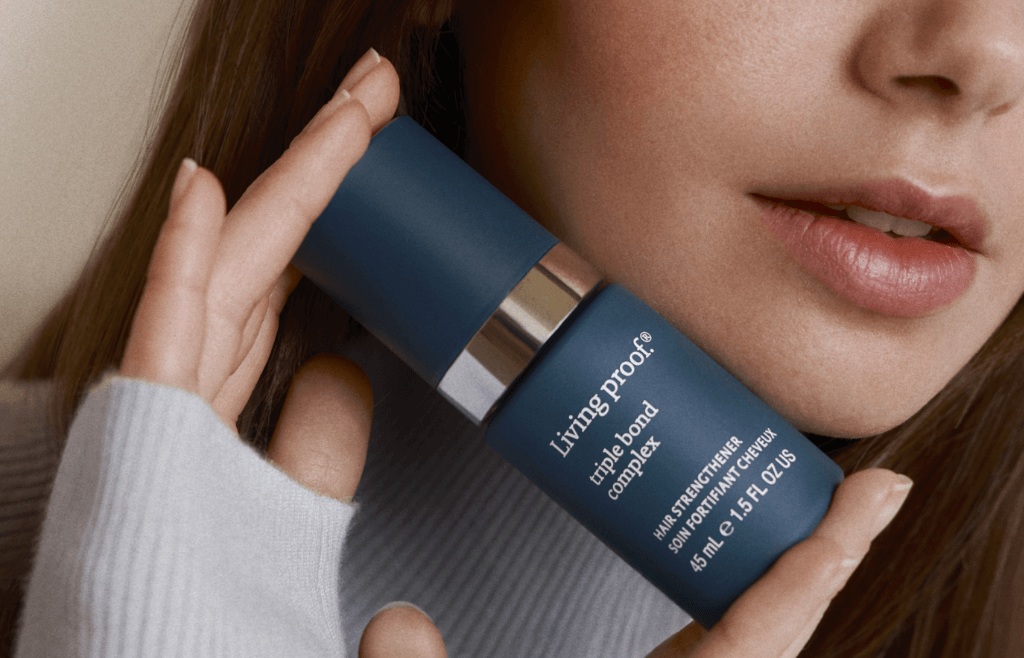 What is healthy hair?
What is healthy hair?
Healthy hair has a soft texture, natural shine, and elasticity, meaning it resists breakage when stretched. It’s hydrated, free from excessive split ends, and has a smooth cuticle that lies flat. Healthy haircare practices contribute to these attributes, ensuring hair remains strong and resilient.
What are the signs of unhealthy hair?
Some signs of unhealthy hair include:
- Excessive dryness or oiliness
- Breakage and shedding more than the typical 50-100 hairs a day
- Thinning or bald patches
- Split ends
- A dull appearance or lack of shine
- Rough texture
- Scalp issues such as itchiness or redness

